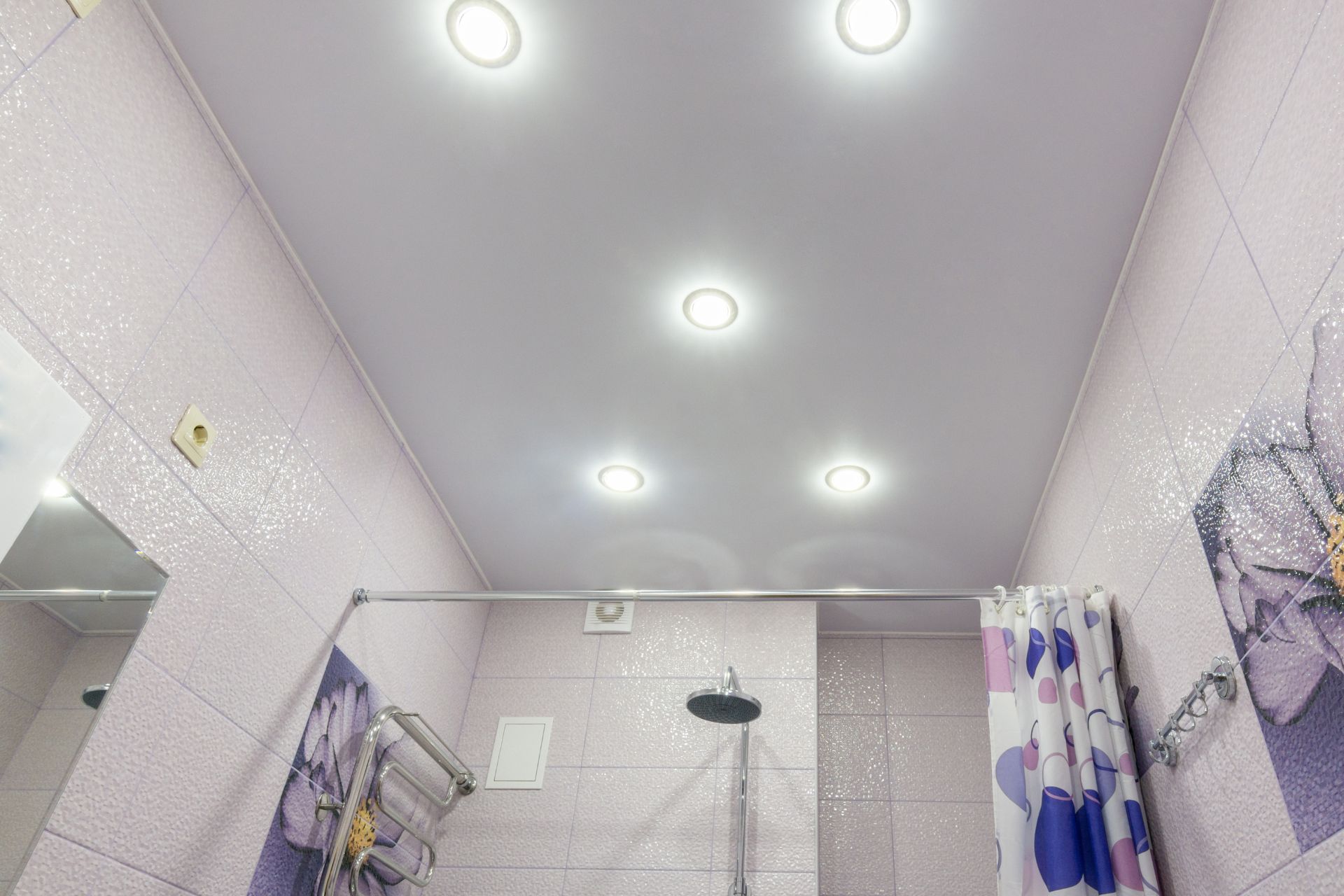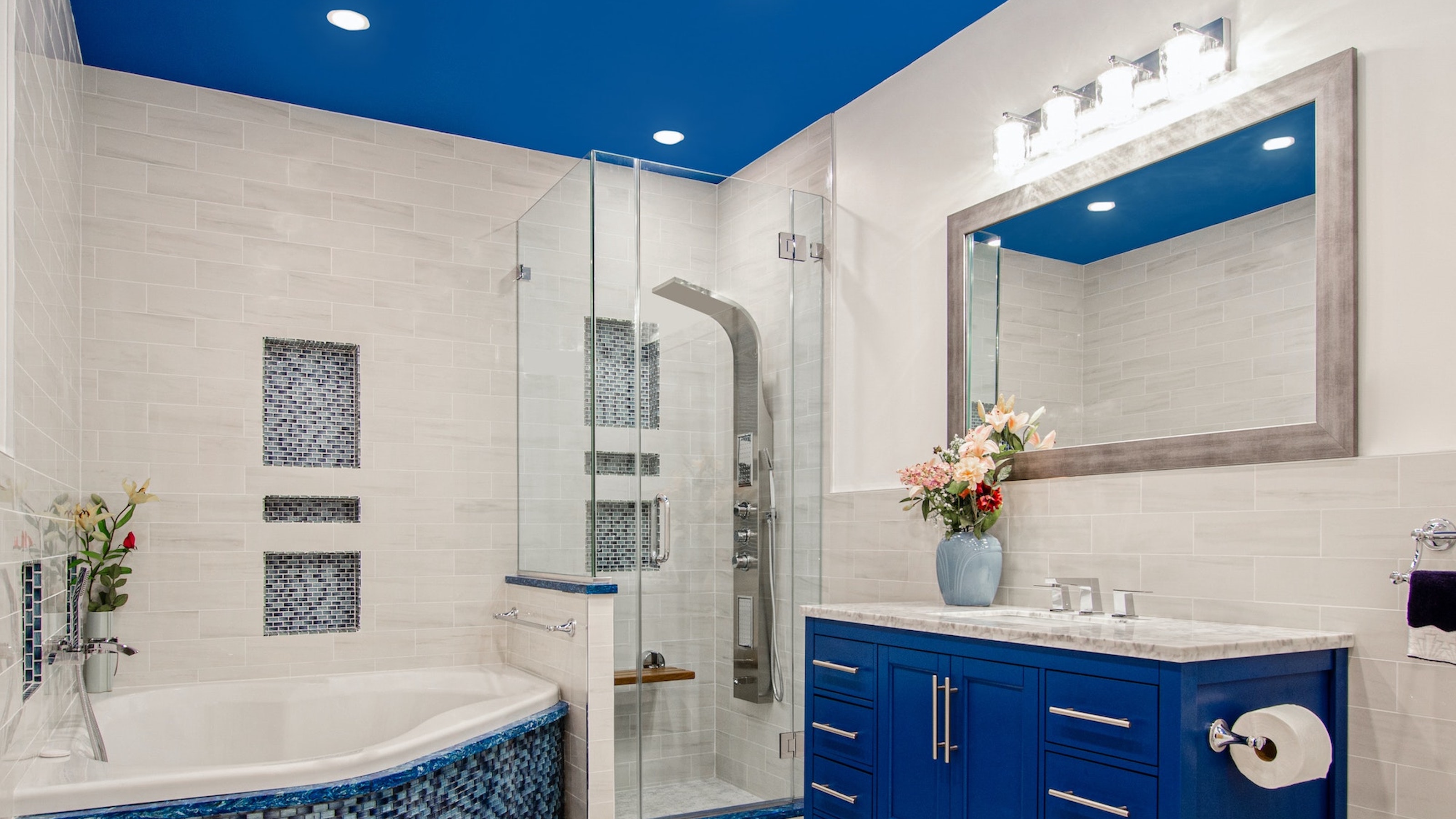Popular Pop Design Styles for Bathroom Ceilings
Pop designs, also known as false ceilings, have become a popular choice for enhancing the aesthetics and functionality of bathrooms. They offer a versatile canvas for incorporating creative design elements, improving lighting, and concealing unsightly wiring or plumbing. Let’s explore some popular pop design styles that can transform your bathroom into a luxurious oasis.
Coffered Ceilings
Coffered ceilings are a classic design element that adds a touch of elegance and sophistication to any space. They are characterized by recessed panels, creating a grid-like pattern on the ceiling. These panels can be square, rectangular, or even octagonal, depending on the desired aesthetic.
- Visual Appeal: Coffered ceilings add depth and dimension to the bathroom, making it appear larger and more spacious. The intricate patterns create a sense of visual interest, drawing the eye upwards and enhancing the overall grandeur of the room.
- Functionality: Coffered ceilings can help to improve acoustics by absorbing sound, making the bathroom quieter and more relaxing. They can also be used to conceal lighting fixtures or ventilation systems, creating a clean and uncluttered look.
- Pros: Coffered ceilings can be customized to match the style of the bathroom, from traditional to modern. They can also be painted in various colors to create a desired mood or accentuate the overall design scheme.
- Cons: Coffered ceilings can be more expensive to install than a standard flat ceiling, especially if intricate designs are involved. The installation process may also require more time and labor, potentially leading to disruptions during the bathroom renovation.
Tray Ceilings
Tray ceilings are another popular choice for bathrooms, offering a contemporary and stylish look. They feature a recessed section in the center of the ceiling, creating a tray-like appearance.
- Visual Appeal: Tray ceilings create a dramatic focal point in the bathroom, drawing the eye upwards and making the space feel more expansive. They can be accented with decorative moldings or lighting fixtures to further enhance their visual appeal.
- Functionality: Tray ceilings can be used to conceal lighting fixtures or ventilation systems, creating a clean and streamlined look. They can also be used to add a touch of architectural interest to a simple bathroom design.
- Pros: Tray ceilings are relatively easy to install compared to coffered ceilings, making them a more affordable option. They can be customized to fit the size and shape of the bathroom, allowing for a seamless integration into the existing design.
- Cons: Tray ceilings may not be suitable for bathrooms with low ceilings, as they can make the space feel cramped. They also require more maintenance than a standard flat ceiling, as the recessed section can accumulate dust and debris.
Vaulted Ceilings
Vaulted ceilings are a popular choice for bathrooms that want to create a sense of grandeur and spaciousness. They feature a curved or arched design, extending upwards from the walls.
- Visual Appeal: Vaulted ceilings add height and drama to the bathroom, making it feel more luxurious and inviting. They can be accented with skylights or chandeliers to create a stunning focal point.
- Functionality: Vaulted ceilings can improve natural light penetration, making the bathroom feel brighter and more airy. They can also be used to create a sense of openness and flow, especially in smaller bathrooms.
- Pros: Vaulted ceilings can significantly enhance the overall aesthetic of the bathroom, adding a touch of architectural interest and elegance. They can also be customized to match the style of the bathroom, from traditional to modern.
- Cons: Vaulted ceilings are the most expensive pop design option, requiring specialized labor and materials. They also require more maintenance than a standard flat ceiling, as the curved or arched surfaces can be more difficult to clean.
Materials and Finishes for Bathroom Ceiling Pops: Pop Design For Bathroom Ceiling

Bathroom ceiling pops can be made from various materials, each offering unique advantages and disadvantages in terms of durability, moisture resistance, and aesthetic appeal. The choice of material will depend on the overall design of the bathroom, budget, and desired look.
Common Materials for Bathroom Ceiling Pops
The most common materials used for bathroom ceiling pops include drywall, plaster, and wood.
- Drywall is a popular choice for bathroom ceiling pops due to its affordability and ease of installation. It is also relatively lightweight, making it suitable for most ceilings. However, drywall is susceptible to moisture damage, so it is important to seal it properly and ensure good ventilation in the bathroom.
- Plaster is a more traditional material for bathroom ceiling pops, offering a smooth and elegant finish. Plaster is also more durable than drywall and can withstand moisture better. However, it is more expensive and requires skilled labor to install.
- Wood can be used for bathroom ceiling pops, particularly for creating intricate designs or adding a rustic touch. Wood is a durable material and can be finished in various ways to achieve different looks. However, wood is susceptible to moisture damage, so it is essential to use moisture-resistant varieties and apply a sealant.
Finishes for Bathroom Ceiling Pops, Pop design for bathroom ceiling
Once the material for the bathroom ceiling pops is chosen, the next step is to select a finish. Common finishes for bathroom ceiling pops include paint, wallpaper, and tile.
- Paint is the most common finish for bathroom ceiling pops, offering a wide range of colors and finishes. Paint is also relatively affordable and easy to apply. However, paint can be susceptible to moisture damage, so it is important to use a moisture-resistant paint.
- Wallpaper can add a touch of elegance and style to bathroom ceiling pops. Wallpaper is available in various patterns and textures, allowing for customization to match the overall bathroom design. However, wallpaper can be more expensive than paint and may not be as durable.
- Tile is a durable and moisture-resistant finish for bathroom ceiling pops. Tile is available in various materials, colors, and patterns, offering endless possibilities for design. However, tile can be more expensive and require skilled labor to install.
Lighting and Ventilation in Pop Designed Bathrooms

A well-designed pop ceiling can significantly enhance the aesthetic appeal and functionality of a bathroom. Lighting plays a crucial role in creating the desired ambiance, while proper ventilation ensures a healthy and comfortable environment.
Lighting Techniques for Pop Ceilings
Strategic lighting design can transform a bathroom from ordinary to extraordinary.
- Recessed lighting offers a sleek and minimalist look, creating a clean and contemporary aesthetic. It is often used for general illumination, providing even and bright light throughout the bathroom.
- Pendant lights, suspended from the ceiling, add a touch of elegance and style. They are particularly suitable for highlighting specific areas, such as a vanity mirror or a bathtub.
- Chandeliers, with their ornate designs and sparkling crystals, can create a luxurious and glamorous ambiance. They are ideal for larger bathrooms where they can serve as a statement piece.
Ventilation in Pop Designed Bathrooms
Proper ventilation is essential for preventing moisture buildup, which can lead to mold growth and unpleasant odors.
- Exhaust fans are crucial for removing moisture and stale air from the bathroom. They should be installed near the shower or bathtub and be powerful enough to effectively ventilate the space.
- When designing a pop ceiling, it is essential to consider the location and size of the exhaust fan. It should be positioned strategically to ensure optimal air circulation.
- Incorporating ventilation systems into the pop design allows for seamless integration and ensures that the fan is properly concealed and aesthetically pleasing.
